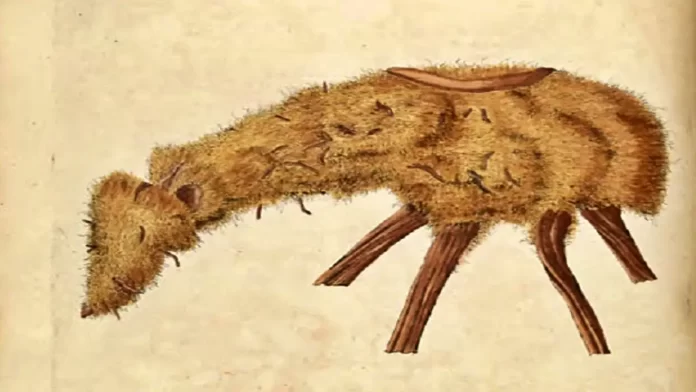Imagine a lamb growing on a plant, tethered to the ground by a stem. Sounds like something out of a fantasy novel, right? Yet, this strange concept was once a widely believed myth in medieval Europe. Known as the Vegetable Lamb of Tartary, or by its other names like the Scythian Lamb and Barometz, this legendary creature fascinated scholars, explorers, and storytellers for centuries. But what exactly was it, and why did people believe in such an odd idea? Let’s dive into the history, origins, and eventual debunking of one of the strangest myths of the Middle Ages.
What Was the Vegetable Lamb of Tartary?
The legend describes a peculiar plant-animal hybrid. According to tales, the Vegetable Lamb grew from a tree or bush, connected to the ground by a stem resembling an umbilical cord. It looked like a small lamb, complete with flesh, bones, and blood, but lacked wool. The lamb could graze on nearby vegetation until the tether broke, at which point it would die. Its sweet-tasting flesh and honey-like blood were said to be edible, and its silky fleece was used to make linings for hats.
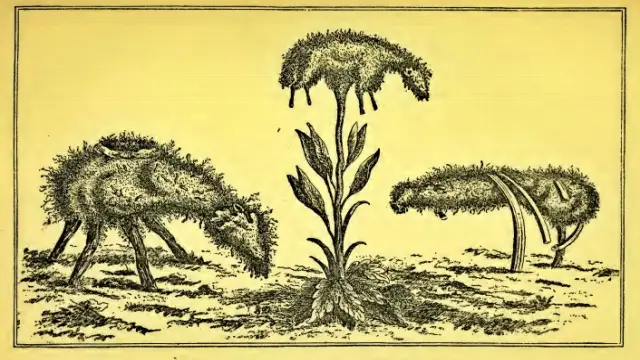
This bizarre image appeared in various forms across centuries, blending folklore, botany, and zoology into one fantastical creation. But where did this idea come from?
Origins of the Myth
Sir John Mandeville’s Travels
One of the earliest mentions of the Vegetable Lamb comes from The Travels of Sir John Mandeville, a collection of traveler’s tales compiled between 1357 and 1371. In Chapter XXVI, Mandeville describes a mysterious fruit that, when cut open, reveals a tiny lamb-like creature inside. He even claims to have eaten it himself, marveling at God’s wonders. While Mandeville’s accounts are often considered unreliable, they helped popularize the myth.
Ancient Talmudic Traditions
Long before Mandeville, Jewish texts spoke of similar creatures. The Jeduah was described as a plant-animal tethered to the earth by a cord. Hunters killed it by cutting the cord, and its bones were used in magical ceremonies to predict the future. Another variant, the Jedoui, took human form and acted as a savage beast, killing anyone within reach unless stopped by severing its navel cord.
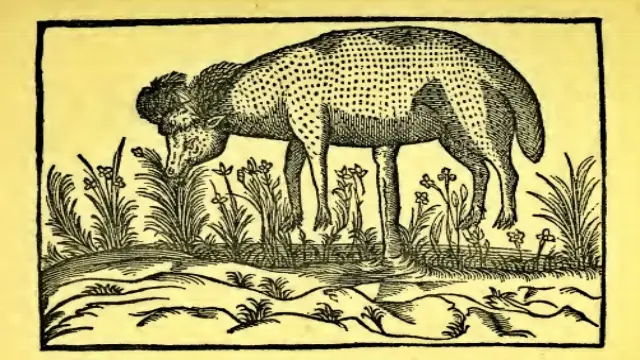
These ancient stories laid the groundwork for later interpretations of the Vegetable Lamb, blending elements of mysticism and nature.
Explorers’ Tales and Misinterpretations
As exploration expanded during the Renaissance, travelers brought back tales of exotic plants and animals. Many claimed to have seen the Vegetable Lamb in far-off lands like Tartary (modern-day Central Asia). For example:
- Odoricus of Friuli, a Minorite friar writing around 1330, compared the Vegetable Lamb to barnacle geese, another mythical creature believed to grow on trees near the Irish Sea.
- Sir Hans Sloane, in 1698, presented a specimen to the Royal Society of London. Described as over a foot long with protuberances resembling fern stalks, this “lamb” turned out to be the rootstock of a tree-fern genus called Dicksonia. However, the fleece associated with the myth likely came from cotton plants.
Herodotus and Wool-Bearing Trees
The confusion surrounding the Vegetable Lamb may stem from misinterpretations of ancient writings. In his Histories, Herodotus mentions “wool-bearing trees” in India, whose fibers were woven into clothing. Other classical authors echoed this, describing how pods resembling walnuts contained a wool-like substance extracted for fabric.
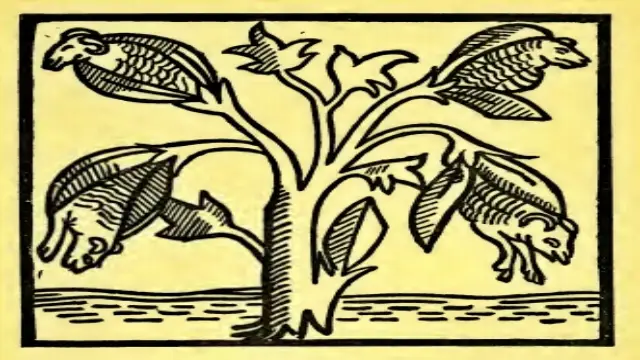
The Greek word μήλον (melon)—which can mean “apple,” “fruit,” or “sheep”—and έαρινόν (earinon), meaning “vernal” or “spring,” contributed to the mix-up. Phrases like “spring apple” or “spring lamb” led to literal interpretations of cotton-growing trees as actual lambs.
Debunking the Myth
By the 18th century, skepticism began to replace belief. John Bell of Autermony, who traveled through Russia and Asia, noted that locals laughed off the idea of the Vegetable Lamb as a ridiculous fable. Scholars eventually identified the true sources of the myth:
- Tree-Fern Roots: Specimens like those shown by Hans Sloane were simply roots of ferns, misidentified due to their unusual shapes.
- Cotton Plants: The “fleece” attributed to the Vegetable Lamb actually came from cotton, a plant unfamiliar to many Europeans at the time.
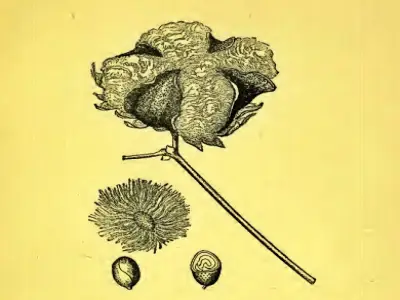
Once cotton became widely known, especially after the discovery of the Americas, the myth lost credibility. Cotton’s soft fibers explained the “wool” mentioned in ancient texts, while the fantastical imagery faded into obscurity.
Why Did People Believe It?
Several factors explain why the Vegetable Lamb captured imaginations:
- Limited Knowledge: Without modern science, people relied on travelers’ tales and ancient texts, often taking them at face value.
- Symbolism: The lamb represented innocence and purity, making it a fitting symbol for religious and mystical interpretations.
- Curiosity About Nature: During a time of exploration, anything seemed possible. If barnacle geese could grow on trees, why not lambs?
Legacy of the Vegetable Lamb
Though largely forgotten today, the Vegetable Lamb remains a fascinating example of how myths arise from misunderstandings. It highlights humanity’s enduring fascination with the natural world—and our tendency to fill gaps in knowledge with imaginative explanations.
Conclusion
The Vegetable Lamb of Tartary is more than just a quirky medieval myth; it’s a testament to the power of storytelling and the limits of human understanding. From Sir John Mandeville’s fanciful travels to Herodotus’s wool-bearing trees, this legend weaves together history, culture, and botany in unexpected ways. While we now know the truth behind the myth, its charm lies in its ability to spark wonder—even if that wonder stems from a simple misunderstanding.
So next time you see a cotton plant, take a moment to appreciate how far we’ve come in unraveling the mysteries of the natural world!
What do you think about the Vegetable Lamb myth? Share your thoughts below!

